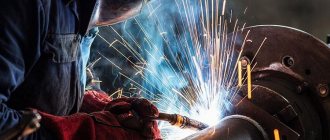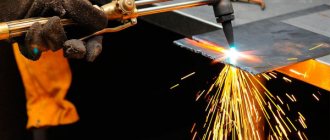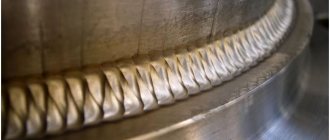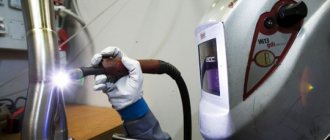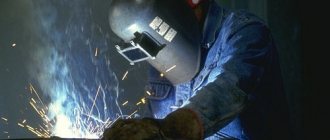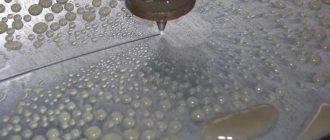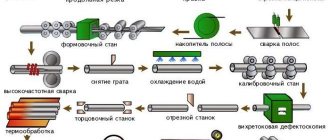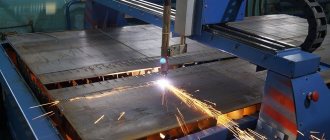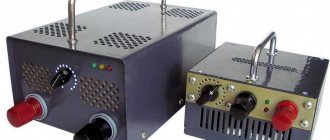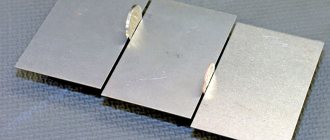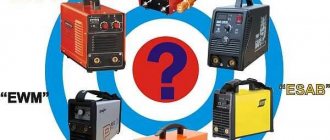Inverter-type welding equipment today is widely used in various industries, in public utilities, and in everyday life. The range of units is quite large and includes devices with different technical characteristics and functionality. To select the most optimal solution, it is necessary to analyze various parameters. In particular, you need to calculate how much power the welding machine consumes. This data can be easily calculated using a special formula.
Experienced welders are thoroughly familiar with the features of welding machines and understand the mechanism of operation of the equipment. If you are just starting to work with the inverter, be sure to read the instruction manual in detail. When calculating power consumption, the operating conditions of the equipment and the purpose of use should be taken into account.
Types of inverter devices
First of all, we recommend that you familiarize yourself with the types of inverter units. All models of this type are divided into three large groups. Each has its own characteristics. Let's take a closer look.
- Household or amateur. This includes models that are powered by a conventional single-phase 220V network. At maximum power, welding with such a unit can only take 20-30 minutes. Afterwards you need to give the device a chance to rest. This time is quite enough to perform one-time operations at home or in the garage. In addition, household inverters are inexpensive, compact in size and light in weight.
- Semi-professional. More powerful devices compared to units from the first category. They are capable of working for up to 8 hours without a break; they are purchased for use in auto repair shops and small enterprises.
- Professional. Welding equipment is designed for frequent use in difficult conditions. They are purchased for large enterprises and factories for the production of metal structures. They effectively weld parts from different metals, work for a long time without interruption, do not overheat, and are powered by a three-phase 380V network. But the models are also expensive.
If you buy equipment for use in the household, take into account one important nuance: the maximum load current should not be higher than 160A. Power circuit breakers and electrical fittings, which are installed in private houses and apartments, are not designed for a current higher than this value.
You cannot connect equipment with a current strength exceeding 160A to the household network. This can lead not only to the operation of the machines, but also to burnout of contacts or fire of electrical wiring. It's better not to let this happen. There are enough amateur-class models in the manufacturers' lines; choose a device from this category for home use, and buy professional ones only if you can connect the equipment to a 3-phase 380V network.
Wire feeder
There are three popular wire feeding options:
- Pushing.
- Pulling.
- Combined.
Pushing
In the body of the semi-automatic welding machine there are rollers that push the wire into the welding sleeve. This imposes restrictions on the maximum length (up to 5 m), since the ejected consumable can get stuck in the bend of the channel.
Pulling
The mechanism responsible for feeding the wire is located directly in the torch. This allows you to pull wire more efficiently and work with a longer hose. There is also a small drawback - the increased weight of the burner. It may be difficult to hold at heights or in hard-to-reach places.
Combined
This option provides for the presence of both of the above mechanisms. The length of the sleeve can reach 10 meters. This is very convenient when working with large structures, as it allows you to quickly move along them without moving the device itself.
Inverter device design
Familiarization with the structure and mechanism of operation of the inverter will not only simplify operation, but will also help prevent breakdowns and malfunctions. So, first of all, the voltage of 220V with a frequency of 50 Hz turns from alternating to constant, and then again into alternating, but at high frequency. Then this voltage again becomes constant and is transferred to the working arc. The quality characteristics of the arc are controlled automatically. A special microprocessor built into the control unit is responsible for this. There is practically no arc sticking in inverters, and this is its significant advantage over transformer-type models.
When a short circuit occurs, which lasts no more than 0.5 seconds, the electronics generate powerful impulses. Due to this, the molten metal bridges are destroyed, which avoids sticking. If the short circuit lasts longer, the equipment shuts down completely. The electrode does not stick to the workpiece, and the machine circuit does not overheat. This is a fundamental difference between inverter-type devices and units that operate on transformers. Characteristic features of welding machines manufactured using inverter technology:
- increased productivity rates – up to 95%;
- no inductive losses during welding;
- resistance to voltage surges and short circuits;
- possibility of precise adjustment of operating parameters;
- electrodes of different sizes made from various raw materials can be used as consumables;
- safe operation, the device is equipped with highly effective protective mechanisms;
- instant ignition of an electric arc;
- compact dimensions;
- light weight.
Another important feature of inverter devices is electricity consumption. Regardless of power consumption, all energy is spent only on the work process. The efficiency of inverters is 85-95%. These are quite high figures.
Final conclusions
For non-professional use, semi-automatic welding machines of medium power and low cost are quite suitable. It is not difficult to choose and buy a device to perform high-quality work. For the garage, for garage work at the household level, it is better to use inverter-type semi-automatic welding machines. Given the price/quality ratio, it is easier to achieve high-quality welding with them.
Transformer-type semi-automatic devices should be better suited for stationary garage operation, but, not having sufficient automatic control functions, they are less preferable. High-quality car repairs can only be done with an inverter option.
Studying the technical specifications
To choose a suitable inverter device, you should definitely study the technical characteristics of the models in question and read reviews about them. The power consumption of 220V equipment is calculated taking into account the following parameters:
- input voltage (minimum and maximum);
- current range;
- working arc voltage;
- Efficiency of the welding equipment model under consideration;
- PV or continuous on time;
- maximum power.
These parameters are specified in the instruction manual. Before buying welding equipment, familiarize yourself with what each of them means and how it affects power consumption.
What do you need to know?
Before you start calculating the power consumption of an inverter welding machine, you need to know the following:
- Input voltage range.
- Welding current range.
- Welding arc voltage.
- The efficiency of a specific welding machine model.
- Duration of switching on.
- Model specific power factor.
Read also: Main products of ferrous metallurgy
The range of welding current is needed in order to find out under what characteristics of the electric current network we will have to work. It is probably no secret to anyone that often in our electrical networks there is no rated voltage of 220 V. Often it barely reaches 200 V. It should be remembered: the voltage drop when connecting a household-type welding inverter is 5-10% of the total network rating. Therefore, the best power indicators will be found in inverters that are designed for supply voltages from 150-170 V to 220-250 V.
The range of welding current gives us the values of the maximum and minimum levels; the power of the device directly depends on these parameters. For household inverters, these indicators at the lower limit vary from 10 to 50 A, and at the upper limit 100-160 A. The output current voltage, which can also be called the welding arc voltage, ranges for inexpensive household models from 20 to 30 V. The efficiency of Inverters with a maximum output current of 160 A, as a rule, rarely exceed 0.85%. The high efficiency of the welding unit directly depends on the duration of operation.
Voltage
Let's start with the first characteristic - voltage range. This indicator is needed to determine whether the device can operate on the network to which you plan to connect it. If you buy a model for domestic use, choose from single-phase models; if for industrial use, choose from three-phase ones.
It is important that the equipment can operate at a lower voltage, because 220V is rare in household networks. In most cases, the voltage does not exceed 200V. Excellent power indicators are demonstrated by welding machines that function properly in a network with voltage from 150-170V to 220-250V.
Work without interruption
PV or on-duration is the time during which the welding machine is able to weld parts without interruption, determined as a percentage. Equipment operation is usually divided into cycles of 10 minutes each. But not all 10 minutes can be welded without interruption. If the duty cycle is 70%, then 7 out of 10 minutes can be worked continuously, then a stop should be made. As a rule, manufacturers designate different PVs for operation at different welding currents.
If you ignore the need to take regular breaks, the welding equipment itself will suffer. During prolonged operation without a break, the internal mechanisms overheat, the automatic relay is activated, and the unit turns off. Frequent operation in this mode negatively affects the condition and functioning of important components of the welding inverter.
Rating review + (Video)
| Place | Name | Rating | Price, rub.) |
| 1 | AuroraPRO Overman 2000 | 9,6/10 | 29400 |
| 2 | Elitech IS 220 P | 9,0/10 | 27010 |
| 3 | Resanta SAIPA-200 | 8,2/10 | 24940 |
The rating of the best semi-automatic machines opens with AuroraPRO Overman 2000. The device is intended only for welding with wire. The lower voltage threshold at which the device operates stably is 140 V. The device provides good smooth adjustment of current and voltage. There is only one drawback - the wire feeding mode is somewhat rigid. But the quality-to-price ratio in this device is the best.
The Elitech IS 220 P semi-automatic welding machine can operate normally when the mains voltage drops to 160 V. The maximum power consumption does not exceed 5.4 kW. With a maximum welding current of 180 A, the on-time is 80%. The good ergonomics of the device allows it to be used in different levels.
Resanta SAIPA-200 is widely distributed. The maximum welding current of the device stated in the description reaches 200 amperes. In practice, this is not always confirmed, but such a value is not always interesting for the user. But the switching time reaches 70%. Wire up to 1 mm is used, without overheating or overload.
Calculation by formula
Now let's look at how to calculate the power factor. For this purpose, the formula is used: the duty cycle in minutes is divided by the sum of the operating time before and after stopping. We multiply the resulting number by 100. Let’s say the device welded metal regularly for 6 minutes without interruption. Then the protective mechanism was activated, it stopped the working process, the device “rested” for 4 minutes, after which it started working again. We calculate the coefficient using the formula:
6/(4+6) x 100 = 60%
The power factor for inverter devices of the amateur and semi-professional classes does not exceed 70%. As a rule, this figure is in the range of 60-70%. Data that may be required to calculate the power consumed by an inverter device is available in the technical documentation. The necessary information is posted on the manufacturer’s website, in the instruction manual, or directly on the page of the online store where you are going to buy the tool, in the Characteristics section.
Let's look at how to calculate power using the example of a unit with the following technical parameters:
- voltage MIN – 160V;
- voltage MAX – 220V;
- current strength – 160A;
- arc voltage – 23V;
- Efficiency – 0.89%;
- PV – 60%.
First, let's determine the maximum power. It is necessary to multiply the welding current by the working arc voltage. The resulting value is divided by the efficiency. Here's what happened:
160A x 23V / 0.89 = 4135 Watts
This is an indicator of the power required to power the unit directly during the welding process. To calculate the average value, you need to multiply the maximum power by the duty cycle and divide by 100%.
4135 x 60 / 100 = 2481 W.
The result is the nominal value of power consumption. Why is the rated power taken for calculations? The welding inverter will not operate at maximum current all the time. It stops welding at a lower current, so it is not advisable to buy a model with a power that is almost twice the required value.
By the way, you don’t have to calculate the power consumption yourself; the manufacturer has already done it for you. This characteristic is indicated in the technical documentation along with other indicators.
Semi-automatic
Such a common type of equipment as a semi-automatic welding machine allows you to work in a wide range of currents and perform difficult operations on welding sheet blanks and non-ferrous metals.
With the help of semi-automatic welding equipment, it is possible to fuse difficult-to-process products from thin-sheet material, which are usually worked with in auto repair shops.
Read also: Automatic washing machine engine speed
This type of welding machine allows you to weld in a protective atmosphere of argon or carbon dioxide, which increases the efficiency and quality of welding by blocking the oxygen contained in the air.
Sometimes, for these purposes, a special flux-cored wire is used, which acts as a filler material and also improves the quality of the weld.
The operating power of the semi-automatic device is selected taking into account all the previously discussed factors, to which should be added the peculiarity of this device.
The fact is that at the moment the semi-automatic device is turned on, a pulse jump in current consumption is observed, which must be taken into account when evaluating the purchased equipment.
It is also important to navigate the cost of the welding machine you choose, which is directly related to its power rating. However, in the case when it is necessary to work with thin-sheet workpieces and non-ferrous metals, you can quite accept the additional costs when purchasing a semi-automatic machine.
When assessing the parameter of the current consumed by the unit (regardless of the model and class), specialists also take into account such a parameter little known to amateurs as the power factor of a welding inverter or any other welding device. This value takes into account the reactive nature of the load on the network when one or another welding machine is connected to it.
For some of them (inverter, in particular), capacitive indicators of reactive losses predominate, and for transformer circuits, inductive components are more noticeable.
As a result, it should be noted once again that the power of any welding unit is the most important indicator of its operating efficiency in various operating modes . That is why special attention should be paid to the choice of this parameter.
The power consumption of a welding inverter is quite easy to calculate using a simple formula. To understand all the nuances associated with the operation of a welder and the aspects of calculating its power, you need to clarify several points that everyone who welds needs to know. And it doesn’t matter where you carry out welding work, at home, in the garage, at the dacha or in a professional team of a large workshop or factory.
Selecting electrodes for a welding inverter
The power and current also determine which electrodes can be used with the unit. The range of consumables is very wide. Installing an unsuitable electrode leads not only to deterioration in welding quality, but also to breakdown of the inverter apparatus. We have compiled a table that will help you select electrodes.
| Thickness of metal workpiece (mm) | Current (A) | Electrode diameter (mm) |
| 1-4 | 20-90 | up to 2 |
| 5-7 | 90-130 | 3 |
| 8-12 | 140-180 | 4 |
| 12-16 | 180-220 | 5 |
| from 15 | from 220 | from 6 |
Consumable electrodes used for inverter welding must comply with the requirements of GOST 9467-75. Only such consumables can be considered safe to use; they ensure high quality of the welding process and leave behind neat, even seams. Electrodes are classified into those used for welding conventional (ANO) and critical (USSI) structures.
OZS-12 are popular electrodes that allow you to work at low currents. They can be used to work with low-carbon and carbon steels. ANO-36 is also often used; their surface is treated with a rutile cellulose coating. They light up easily and are recommended for those who do not yet have sufficient experience in using welding machines. Such electrodes are suitable for welding parts made of stainless and high-alloy steel. Consumables for welding aluminum sheets, cast iron and other metals are available for sale. The speed and efficiency of welding, as well as the quality of the seam, depend on the correct choice of electrode.
Shielding gas
Semi-automatic welding requires the use of shielding gas. This can be an active or inert gas, which gives the method its name - MIG/MAG. Gas enters the burner from a cylinder or is formed by combustion of flux powder located directly in the wire. Gas is necessary to protect the liquid metal from the air during welding.
Here are the most common options for shielding gas for semi-automatic machines (in the case of welding using a cylinder):
- Carbon dioxide. It has a minimal cost and can be supplied in cylinders. Best suited for welding ferrous metal, mainly thin plates (up to 1.2 mm thick) and joints.
- Argon mixed with carbon dioxide (4 to 1). Such mixtures are called MIX and cost more than pure carbon dioxide. They are able to provide a soft arc, reduce the amount of metal spatter and produce a seam with small flakes. The mixture is suitable for carbon and stainless steel.
- Argon. Used for welding alloy steel, aluminum, titanium and copper. To work with non-ferrous metals, you need the appropriate wire.
When working with a semi-automatic device, you can do without a cylinder. For this purpose, a special wire with flux filling is used, which melts during welding and releases protective gas.
